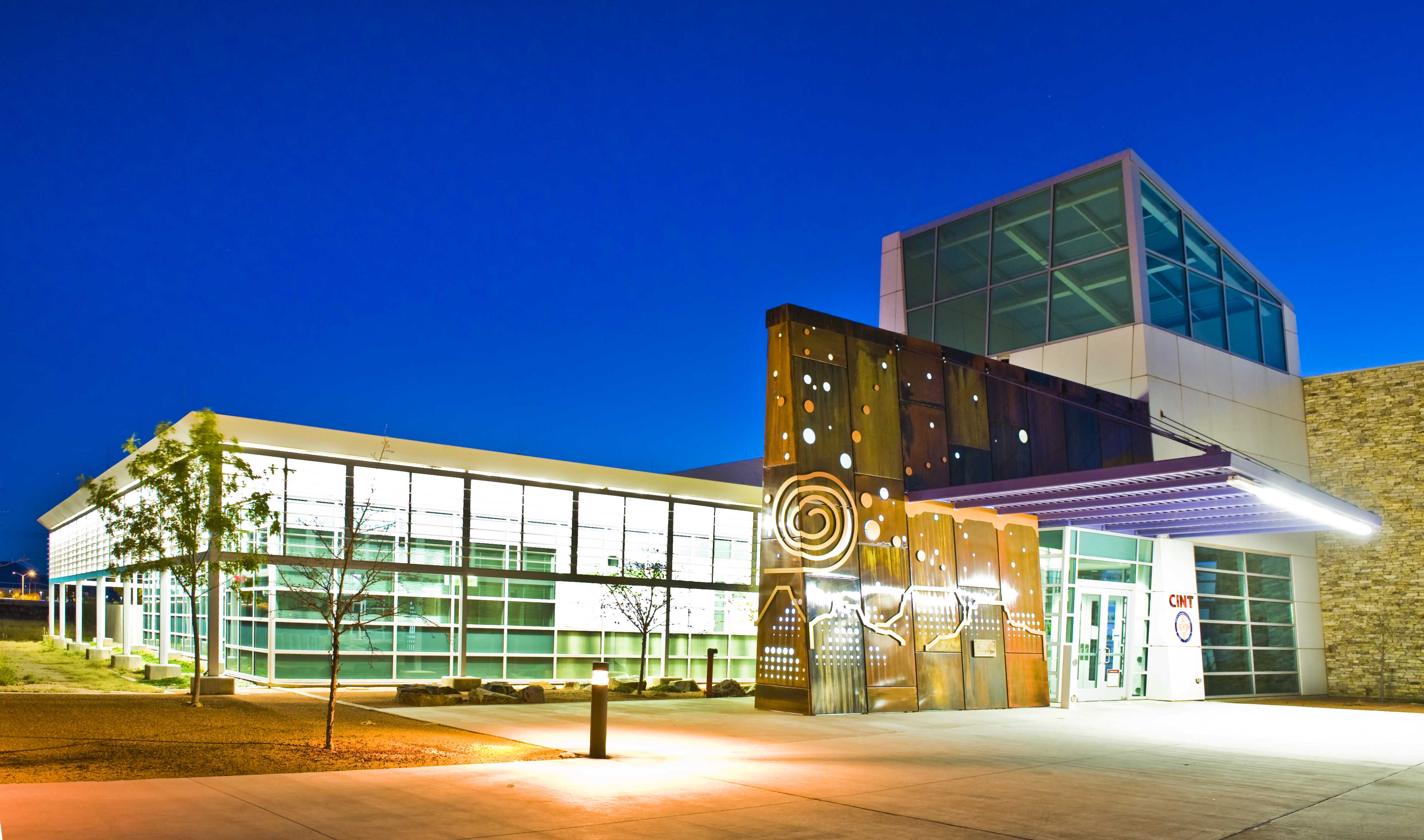Center for Integrated Nanotechnologies (CINT)

Description
The Center for Integrated Nanotechnologies (CINT) began operations in 2006 and is jointly administered by Los Alamos National Laboratory and Sandia National Laboratories. This Center makes use of a wide range of specialized facilities including the Microsystems and Engineering Sciences Applications (MESA) at SNL and the National High Magnetic Field Laboratory at LANL. CINT’s vision is to become a world leading resource for developing the scientific principles that govern the design, performance, and integration of nanostructured materials into the micro and macroscale worlds. This differentiating focus on nanomaterials integration involves the experimental and theoretical exploration of behavior over multiple spatial and temporal length scales, the development of novel synthesis and processing approaches, and an understanding of emergent behavior and new performance regimes.
CINT focus areas are nanophotonics and nanoelectronics, complex functional nanomaterials, nanomechanics, and the nanoscale/bio/microscale interfaces. CINT has been especially successful in creating a growing number of Micro-Electro-Mechanical Systems (MEMS) – discovery science platforms that are readily delivered to users or employed in collaborations with CINT scientists.
Science
Research at CINT over the next decade will support four scientific thrusts: (1) Nanophotonics and Optical Nanomaterials—synthesis, excitation and energy transformations of optically active nanomaterials and collective or emergent electromagnetic phenomena (e.g., plasmonics, metamaterials, photonic lattices); (2) Nanoscale Electronics, Mechanics and Systems—control of electronic transport and wave functions, and mechanical coupling and properties using nanomaterials and integrated nanosystems; (3) Soft, Biological and Composite Nanomaterials—solution-based materials synthesis and assembly of soft, composite and artificial bio-mimetic nanosystems; (4) Theory and Simulation of Nanoscale Phenomena—assembly, interfacial interactions, and emergent properties of nanoscale systems, including their electronic, magnetic, and optical properties. This comprehensive portfolio of capabilities is complemented by CINT Discovery Platforms™, which are customized microfabricated structures and devices used for nanoscience research.

